Hualien County, Taiwan – Wednesday, May 11th, 2011
 When looking up popular tourist site in Taiwan that don’t involve roller coasters, Taroko National Park was always near the top of the list. Taiwan’s most popular national park is organized around the Taroko Gorge, a massive marble and limestone gorge carved by the Liwu River. After my good experience at Jiuzhaigou National Park the previous month, I wanted to make time for Taroko National Park in my Taiwan itinerary as well. Because this park was significantly larger in area, I learned it was best experienced either with your own car or with a private bus tour group, as the public transport could be unreliable and only committed hikers should attempt on foot. I didn’t have the money or inclination to rent a car by myself, so I booked an English-friendly tour group through my hostel.
When looking up popular tourist site in Taiwan that don’t involve roller coasters, Taroko National Park was always near the top of the list. Taiwan’s most popular national park is organized around the Taroko Gorge, a massive marble and limestone gorge carved by the Liwu River. After my good experience at Jiuzhaigou National Park the previous month, I wanted to make time for Taroko National Park in my Taiwan itinerary as well. Because this park was significantly larger in area, I learned it was best experienced either with your own car or with a private bus tour group, as the public transport could be unreliable and only committed hikers should attempt on foot. I didn’t have the money or inclination to rent a car by myself, so I booked an English-friendly tour group through my hostel.
 The pick up time from the hostel was supposed to be 9:00am. Around 8:00 I wandered down the street to the nearby 7-11 to grab some breakfast items to eat back in the lobby as I awaited pickup. (It’s not just Japan; 7-11s are kind of a big thing in Taiwan too.) As soon as I left the store to head back, a small white tour bus pulled up along the street next to me. The driver opened the door and urged me to get in if I was going to Taroko. Huh? It was well over over a half hour early, but I climbed aboard, and just as suddenly as the bus had pulled over I was already off on my unexpectedly early tour. In the confusion of the moment, as soon as I sat down I realized that I honestly had no idea if this was the tour I had booked, or if it was a random operator that tries to pick up whatever foreign tourists it can find off the streets.
The pick up time from the hostel was supposed to be 9:00am. Around 8:00 I wandered down the street to the nearby 7-11 to grab some breakfast items to eat back in the lobby as I awaited pickup. (It’s not just Japan; 7-11s are kind of a big thing in Taiwan too.) As soon as I left the store to head back, a small white tour bus pulled up along the street next to me. The driver opened the door and urged me to get in if I was going to Taroko. Huh? It was well over over a half hour early, but I climbed aboard, and just as suddenly as the bus had pulled over I was already off on my unexpectedly early tour. In the confusion of the moment, as soon as I sat down I realized that I honestly had no idea if this was the tour I had booked, or if it was a random operator that tries to pick up whatever foreign tourists it can find off the streets.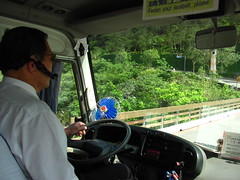 I put that theory to bed when it became clear that everyone else it picked up had also booked in advance; I guess I was just very lucky to have not nearly missed my bus. (I later confirmed that to be the case with the hostel receptionist when I got back.) And at least the unexpectedly early start time meant more time at Taroko!
I put that theory to bed when it became clear that everyone else it picked up had also booked in advance; I guess I was just very lucky to have not nearly missed my bus. (I later confirmed that to be the case with the hostel receptionist when I got back.) And at least the unexpectedly early start time meant more time at Taroko!
About a half-hour drive outside of Hualien, we reached the Taroko Visitor Center. It was a decently newer-looking facility, with most of the exhibits in dual language. We watched a short film about the geological formation of Taroko Gorge and the ecology surrounding it. I know some people like to just get to the nature, but I always enjoy a good visitor center to help build context and anticipation for the natural park experience to come.
From the visitor center, we were then off through the mountains into the heart of Taroko National Park.
Emerging from the other side of the tunnel, our first glimpses inside Taroko. Beautiful.


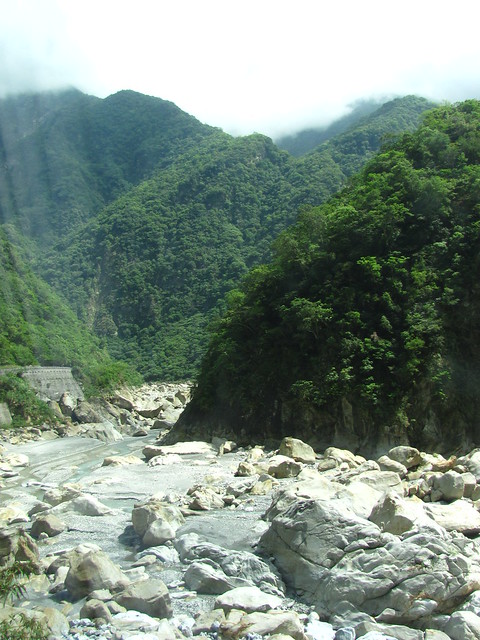
 Fortunately the tour wouldn’t entirely be viewed through a bus window. Our first stop was at a trail through the Bulouwan area, which has been settled by the indigenous people of Taroko for hundreds of years.
Fortunately the tour wouldn’t entirely be viewed through a bus window. Our first stop was at a trail through the Bulouwan area, which has been settled by the indigenous people of Taroko for hundreds of years.



 “What a spectacle except for the dam.” Damn dam.
“What a spectacle except for the dam.” Damn dam.
 The weather turned out beautifully compared to yesterday’s misty overcast.
The weather turned out beautifully compared to yesterday’s misty overcast.
 The Bulouwan trail led us to the Taroko Handcrafts Exhibit. While today Taiwan is majority Han Chinese ethnicity, the island was originally home to many indigenous peoples, including the Truku people who live in this area. I believe “Taroko” was how the Japanese pronounced “Truku,” a name that was kept after the island was given to the Republic of China following WW2.
The Bulouwan trail led us to the Taroko Handcrafts Exhibit. While today Taiwan is majority Han Chinese ethnicity, the island was originally home to many indigenous peoples, including the Truku people who live in this area. I believe “Taroko” was how the Japanese pronounced “Truku,” a name that was kept after the island was given to the Republic of China following WW2.





 Our next stop along the tour ventured into the gorge itself along the Swallow Grotto trail. Hardhats were required to walk this vertiginous trail.
Our next stop along the tour ventured into the gorge itself along the Swallow Grotto trail. Hardhats were required to walk this vertiginous trail.
The simultaneous sense of claustrophobia and vertigo wasn’t helped by the fact that pedestrians and vehicular traffic shared the same route. But for me, Swallow Grotto was easily the highlight of Taroko National Park.



 Wearing that helmet like a mofo.
Wearing that helmet like a mofo.
 Continuing along the grotto trail to the other side of the gorge.
Continuing along the grotto trail to the other side of the gorge.


 If you’re afraid of heights… don’t look over the edge.
If you’re afraid of heights… don’t look over the edge.



 Made it to the other side. Incredible view.
Made it to the other side. Incredible view.
Marble is usually fairly resistant to erosion, but the Liwu River was still enough to carve Taroko Gorge.

 Someone messed up during construction.
Someone messed up during construction.
 The Jinheng Bridge and Park was at the other side at the confluence of the Liwu and Laosi Rivers. The small rest area includes a memorial to its namesake. In the 1950’s Jin Heng was the chief engineer of this section of the Taroko highway, but was killed by a landslide following an earthquake. Apparently the bridge has since been rebuilt several times following earthquakes and typhoons, most recently in 2003, and it’s not unexpected to have to rebuild it again in the future.
The Jinheng Bridge and Park was at the other side at the confluence of the Liwu and Laosi Rivers. The small rest area includes a memorial to its namesake. In the 1950’s Jin Heng was the chief engineer of this section of the Taroko highway, but was killed by a landslide following an earthquake. Apparently the bridge has since been rebuilt several times following earthquakes and typhoons, most recently in 2003, and it’s not unexpected to have to rebuild it again in the future.
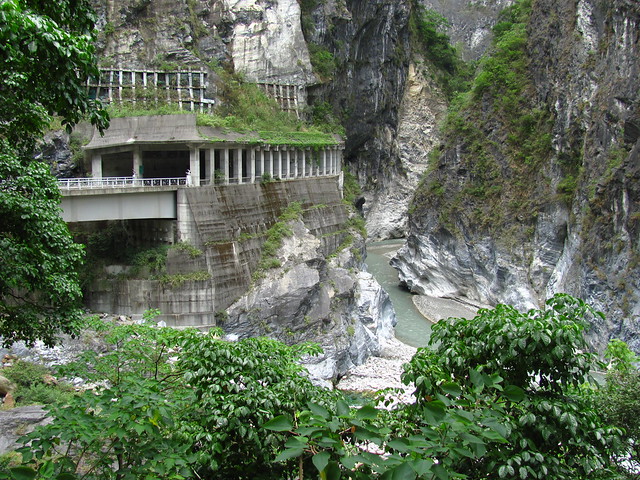

 The unusually steep mountain cliffsides surrounding this confluence of rivers (named Heliu) are quite breathtaking to witness in person.
The unusually steep mountain cliffsides surrounding this confluence of rivers (named Heliu) are quite breathtaking to witness in person.



 Farther up the Liwu River is the Cihmu Bridge. With its bold red design, marble guard lions on one end, and a small pavilion on the other, this is one of Taroko’s most iconic bridges.
Farther up the Liwu River is the Cihmu Bridge. With its bold red design, marble guard lions on one end, and a small pavilion on the other, this is one of Taroko’s most iconic bridges.
The views of the valley from the bridge continue to impress.



 While the most dramatic section of Taroko Gorge was now behind us, there was still more within the national park to see. Tianxiang Village is one of the only areas in Taroko National Park with level land, and so many of the park’s interior facilities are located here, including another small museum exhibition.
While the most dramatic section of Taroko Gorge was now behind us, there was still more within the national park to see. Tianxiang Village is one of the only areas in Taroko National Park with level land, and so many of the park’s interior facilities are located here, including another small museum exhibition.


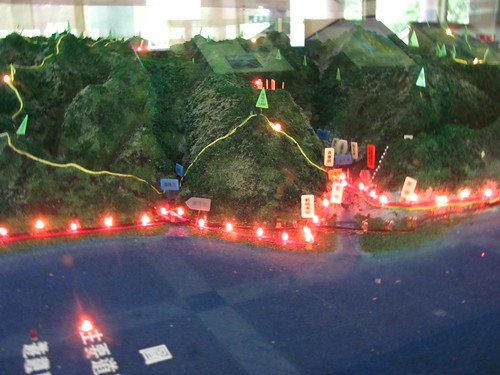
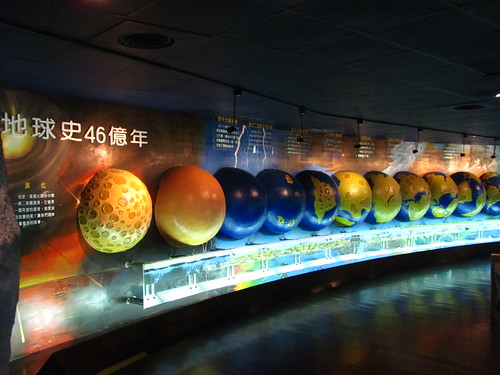 Crossing the Pudu Bridge (the only pedestrian-only bridge in Taroko National Park) takes us to Xiangde Temple across from Tianxiang Village. The temple was completed in 1968.
Crossing the Pudu Bridge (the only pedestrian-only bridge in Taroko National Park) takes us to Xiangde Temple across from Tianxiang Village. The temple was completed in 1968.




 Several Buddhist statues can be found along the paths and trails surrounding Xiangde Temple.
Several Buddhist statues can be found along the paths and trails surrounding Xiangde Temple.




 The impressive Tianfeng Pagoda also towers over the nearby landscape.
The impressive Tianfeng Pagoda also towers over the nearby landscape.


 Turning back towards the front of the park, our tour had another stop to make at the Eternal Spring Shrine, otherwise known as Changchun.
Turning back towards the front of the park, our tour had another stop to make at the Eternal Spring Shrine, otherwise known as Changchun.
 To get there we first need to cross the Changchun Bridge.
To get there we first need to cross the Changchun Bridge.

 We then pass though Guanyin cave, dedicated to the Buddhist goddess of mercy.
We then pass though Guanyin cave, dedicated to the Buddhist goddess of mercy.
While so far this all might sound like a setup for an Indiana Jones movie, the Eternal Spring Shrine is actually dedicated to the 226 people who died during the construction of the roadway through Taroko Gorge from 1956 to 1960. With that many lives lost, one wonders at what point they might finally decide to pull the plug on the project. At least I’d hope they’ve gotten improved safety standards since then. The shrine features a cascading spring that flows year round.
Our tour guide had mentioned that there was a cliffside staircase next to the shrine leading to a bell tower that had some fantastic views. He expected if we were quick we could make it there and back in the allotted time we had at this stop. Our tour group had only had about 12 people in it, and once we made it to the shrine, five of us younger foreign visitors decided as long as we were here we should go for it. So up the stairs we went…
And up…
Looking back down across the river at the tour drop-off point. We never anticipated it to be this high. How much higher could it be?
The trail kept making switchbacks that obscured how much further there was. Getting hot and exhausted, we considered calling it quits, but there was always one more switchback a little bit further that we had to see if the top was maybe just around the next corner. In for a penny, in for a pound.
Nope.
At this point we finally gave up. Who knows, maybe the top really was just around the next corner? Regardless, we were already going to be late for the tour bus. I have no idea how our tour guide thought we could make it up and back in that amount of time. At least the view and attempt still made for a memorable experience. Somewhat defeated, we headed back down.


 We made a quick stop at the gateway near the entrance of the park.
We made a quick stop at the gateway near the entrance of the park.

 This was the point of the tour where, being a private tour company, they needed to make a bit of extra commission to bolster their profits. We stopped at this discount jade market, which was nominally tied to the local culture of the region and I’m sure many tourists enjoy getting a small souvenir at the end of the day. I was mostly ready to get moving back to town, and didn’t particularly need a sales pitch from a polite older Taiwanese lady who very much wanted to know if I had a wife or girlfriend. No, I didn’t, and even if I did, I barely had enough money budgeted to buy a McDonald’s meal that night. This sale was incredibly futile.
This was the point of the tour where, being a private tour company, they needed to make a bit of extra commission to bolster their profits. We stopped at this discount jade market, which was nominally tied to the local culture of the region and I’m sure many tourists enjoy getting a small souvenir at the end of the day. I was mostly ready to get moving back to town, and didn’t particularly need a sales pitch from a polite older Taiwanese lady who very much wanted to know if I had a wife or girlfriend. No, I didn’t, and even if I did, I barely had enough money budgeted to buy a McDonald’s meal that night. This sale was incredibly futile.
 Afterward we made one final stop along the beach near the mouth of the Liwu River. The “sand” by the water was actually various sizes of multicolored pebbles and stones that made for a dazzling appearance. It turned out to be a remarkably pleasant way to end the tour and converse with our fellow tour participants and the guide.
Afterward we made one final stop along the beach near the mouth of the Liwu River. The “sand” by the water was actually various sizes of multicolored pebbles and stones that made for a dazzling appearance. It turned out to be a remarkably pleasant way to end the tour and converse with our fellow tour participants and the guide.

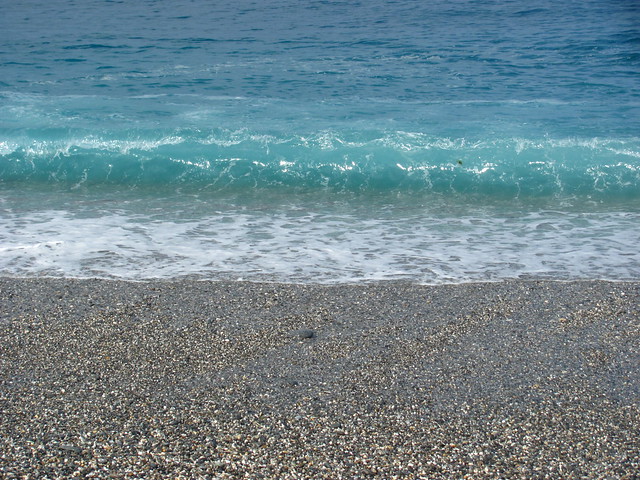

 While not perfect, I would consider it a pretty good tour, especially considering I wasn’t even certain that I was on the right tour bus when it began. My biggest worry was that we’d be looking at nature from out the side of a bus window or scenic stop parking lot for the whole thing, and judging from the sweat I worked up by the end that obviously wasn’t the case.
While not perfect, I would consider it a pretty good tour, especially considering I wasn’t even certain that I was on the right tour bus when it began. My biggest worry was that we’d be looking at nature from out the side of a bus window or scenic stop parking lot for the whole thing, and judging from the sweat I worked up by the end that obviously wasn’t the case.
Was Taroko the most impressive national park I’d been to? Not quite. The gorge is an amazing sight, but it’s also one of those natural landmarks that can’t be fully appreciated at a human scale. You can look at the surrounding landscape in sublime amazement, but that’s really the only way to safely interact with it, and once you’re done with that it’s either a lot more walking or another bus ride for similar views. The organization of the tour might have also peaked too early with the main gorge and Swallow Grotto trail, leaving the second half of the day to pale in comparison. Still, if you’re touring Taiwan, the mix of natural beauty and cultural history still makes Taroko National Park an essential destination, especially when you put in perspective that Taiwan is three times smaller than the state of Ohio.
That evening I made a resolution that I wouldn’t eat at a McDonald’s again and would find some local food. Fortunately when I was back at the hostel I made friends with a girl traveling solo from Scotland who also had a similar resolution. Together we made a trip to the Hualien Dongdamen Night Market to try out some local street food. We sampled several items, but the main event was a mutual dare to try the fried stinky tofu.
I had the olfactory (dis)pleasure of passing by stinky tofu street vendors in Hong Kong for months; the sensory effect of the fermented tofu is not dissimilar to walking by a putrefied garbage dump or inhaling a dirty sock. Nevertheless, I didn’t want to finish my time in Asia without discovering for myself if the taste was as pungent as the smell. Watch the video to find out…

























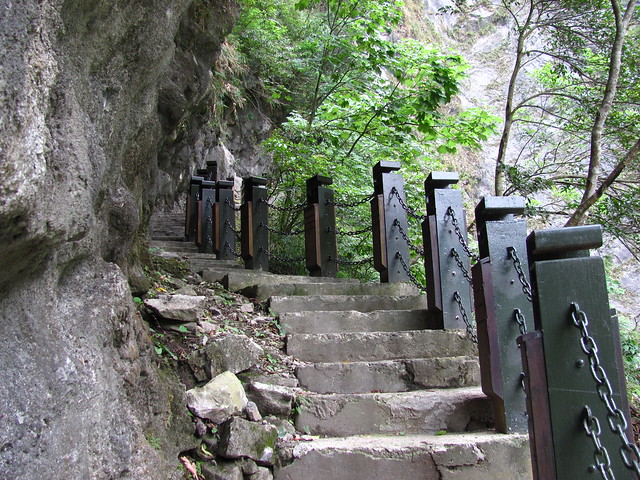

Comments